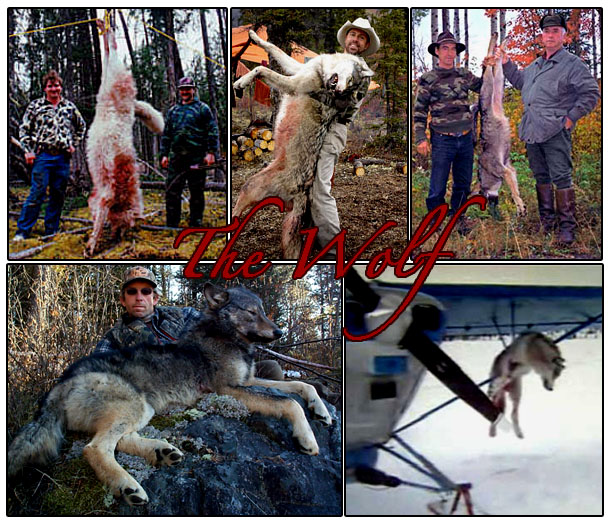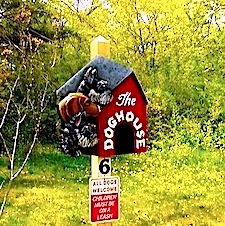

By
Helping a Girl Testify at a Rape Trial, a Dog Ignites a Legal Debate
By WILLIAM GLABERSON
POUGHKEEPSIE, N.Y.
August 9, 2011
Rosie, the first
judicially approved courtroom dog in New York, was in the witness
box here nuzzling a 15-year-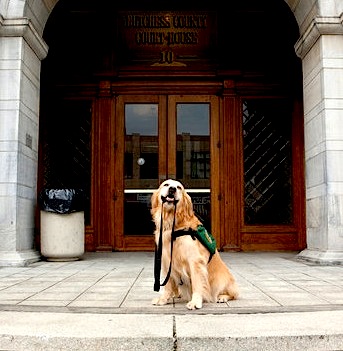 old
girl who was testifying that her father had raped and impregnated
her. Rosie sat by the teenager’s feet. At particularly
bad moments, she leaned in.
old
girl who was testifying that her father had raped and impregnated
her. Rosie sat by the teenager’s feet. At particularly
bad moments, she leaned in.
When the trial ended in June with the father’s conviction,
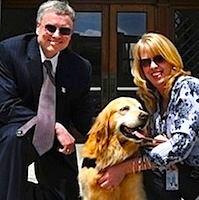 the
teenager “was most grateful to Rosie above all,” said
David A. Crenshaw (at right with Rosie and handler Sherri Cookinham),
a psychologist who works with the teenager. “She just kept hugging
Rosie,” he continued. Now an appeal planned by the
defense lawyers is placing Rosie at the heart of a legal debate that
will test whether there will be more Rosies in courtrooms in New York
and, possibly, other states.
the
teenager “was most grateful to Rosie above all,” said
David A. Crenshaw (at right with Rosie and handler Sherri Cookinham),
a psychologist who works with the teenager. “She just kept hugging
Rosie,” he continued. Now an appeal planned by the
defense lawyers is placing Rosie at the heart of a legal debate that
will test whether there will be more Rosies in courtrooms in New York
and, possibly, other states.
Rosie is a golden retriever therapy dog who specializes in
comforting people when they are under stress. Both prosecutors
and defense lawyers have described her as adorable, though she has
been known to slobber.
Prosecutors here noted that she is also in the vanguard of a growing
trial trend: in Arizona, Hawaii, Idaho, Indiana and some other
states in the last few years, courts have allowed such trained dogs
to offer children and other vulnerable witnesses nuzzling solace in
front of juries.
The new role for dogs as testimony enablers can, however, raise thorny
legal questions. Defense lawyers argue that the dogs may unfairly
sway jurors with their cuteness and the natural empathy they attract,
whether a witness is telling the truth or not, and some prosecutors
insist that the courtroom dogs can be a crucial comfort to those enduring
the ordeal of testifying, especially children.
The new witness-stand role for dogs in several states began
in 2003, when the prosecution won permission for a  dog
named Jeeter with a beige button nose to help in a sexual assault
case in Seattle. “Sometimes the dog means the difference between
a conviction and an acquittal,” said Ellen O’Neill-Stephens
(Left with Jeeter), a prosecutor there who has become a campaigner
for the dog-in-court cause [founder of Court Dogs].
dog
named Jeeter with a beige button nose to help in a sexual assault
case in Seattle. “Sometimes the dog means the difference between
a conviction and an acquittal,” said Ellen O’Neill-Stephens
(Left with Jeeter), a prosecutor there who has become a campaigner
for the dog-in-court cause [founder of Court Dogs].
Service dogs have long been permitted in courts. But in a
ruling in June that  allowed
Rosie to accompany the teenage rape victim to the trial here, a Dutchess
County Court judge, Stephen L. Greller, said the teenager was traumatized
and the defendant, Victor Tohom (right), appeared threatening.
Although he said there was no precedent in the state, Judge
Greller ruled that Rosie was similar to the teddy bear that a New
York appeals court said in 1994 could accompany a child witness. At
least once when the teenager hesitated in Judge Greller’s courtroom,
the dog rose and seemed to push the girl gently with her nose. Mr.
Tohom was convicted and sentenced to 25 years to life.
allowed
Rosie to accompany the teenage rape victim to the trial here, a Dutchess
County Court judge, Stephen L. Greller, said the teenager was traumatized
and the defendant, Victor Tohom (right), appeared threatening.
Although he said there was no precedent in the state, Judge
Greller ruled that Rosie was similar to the teddy bear that a New
York appeals court said in 1994 could accompany a child witness. At
least once when the teenager hesitated in Judge Greller’s courtroom,
the dog rose and seemed to push the girl gently with her nose. Mr.
Tohom was convicted and sentenced to 25 years to life.
His lawyers, David S. Martin and Steven W. Levine of the public
defender’s office, have raised a series of objections
that they say seems likely to land the case in New York’s highest
court. They argue that as a therapy dog, Rosie responds to
people under stress by comforting them, whether the stress comes from
confronting a guilty defendant or lying under oath. But they say jurors
are likely to conclude that the dog is helping victims expose the
truth. “Every time she stroked the dog,” Mr. Martin said
in an interview, “it sent an unconscious message to the jury
that she was under stress because she was telling the truth.”
“There
was no way for me to cross-examine the dog,” Mr. Martin added.
In written arguments,
the defense lawyers claimed it was “prosecutorial misconduct”
for the Dutchess County assistant district attorney handling the rape
case, Kristine Hawlk, to arrange for Rosie to be taken into the courtroom.
Cute as the dog was, the defense said, Rosie’s presence “infected
the trial with such unfairness” that it constituted a violation
of their client’s constitutional rights.
Ms. Hawlk declined to discuss Rosie. In written arguments,
she said that all Rosie did was help a victim suffering from serious
emotional distress, and she called the defense claims “frivolous
accusations.”
The defense lawyers acknowledged the risk of appearing antidog. Rosie,
they wrote, “is a lovely creature and by all standards a ‘good
dog,’ ” and, they added, the defendant “wishes her
only the best.”
As the lawyers prepare their appeal, Rosie has been busy.
She spent much of her time in recent weeks with two girls,  ages
5 and 11, who were getting ready to testify against the man
accused of murder in the stabbing of their mother. The Dutchess
prosecutor in that case, Matthew A. Weishaupt, argued that Rosie and
dogs like her did not affect the substance of the testimony about
horrifying crimes. “These dogs ease the stress and ease the
trauma so a child can take the stand,” Mr. Weishaupt said in
an interview.
ages
5 and 11, who were getting ready to testify against the man
accused of murder in the stabbing of their mother. The Dutchess
prosecutor in that case, Matthew A. Weishaupt, argued that Rosie and
dogs like her did not affect the substance of the testimony about
horrifying crimes. “These dogs ease the stress and ease the
trauma so a child can take the stand,” Mr. Weishaupt said in
an interview.
In the end, Rosie was not needed in the second case: the defendant,
Gabriel Lopez-Perez, who had a history of domestic violence, interrupted
his trial last week to plead guilty to killing the girls’ mother,
his girlfriend, in the Wappingers Falls rooming house where they lived.
But Rosie’s promised appearance next to the children might well
have played a role. “It became obvious,” said Mr. Lopez-Perez’s
lawyer, Andres Aranda, “that the children were going to be testifying,
and he decided to avoid that.”
The defense’s appeal of Rosie’s first courtroom outing,
in the rape case, is likely to establish legal principles on the issues
of dogs in the witness box. “It is an important case, and appeals
courts will consider it an important case,” James A. Cohen,
a professor of criminal law at Fordham University School of Law, said.
 When New York appeals courts study the question, they are likely to
look at the experience of courtroom dogs around the country, including
in Washington. In Seattle, a developmentally disabled
57-year-old man, Douglas K. Lare, recently recalled
how a Labrador retriever named Ellie, who has made more than
50 court appearances, helped him testify against a man charged with
a scheme to steal from him.
When New York appeals courts study the question, they are likely to
look at the experience of courtroom dogs around the country, including
in Washington. In Seattle, a developmentally disabled
57-year-old man, Douglas K. Lare, recently recalled
how a Labrador retriever named Ellie, who has made more than
50 court appearances, helped him testify against a man charged with
a scheme to steal from him.
Ellie
gave him courage when he was afraid, Mr. Lare said in an
interview: “It
was like I had no other friends in the courthouse except Ellie,”
he said.
For 11-year-old Rosie, said her owners, Dale and Lu Picard
(below, the courtroom work is a career change after years
working 
 with
emotionally troubled children at a residential center in Brewster.
The Picards’ organization, Educated Canines Assisting
With Disabilities, or ECAD, places service dogs after training
them to perform tasks like turning lights on and off and opening doors.
with
emotionally troubled children at a residential center in Brewster.
The Picards’ organization, Educated Canines Assisting
With Disabilities, or ECAD, places service dogs after training
them to perform tasks like turning lights on and off and opening doors.
Rosie, named for the civil rights pioneer Rosa Parks,
was originally taught to follow 80 commands, including taking off
a person’s socks without biting any toes. But she has a special
talent with traumatized children, said Dr. Crenshaw, the psychologist
who has worked with all three of Rosie’s witnesses and many
other troubled children. “When they start talking about
difficult things,” Dr. Crenshaw said, “Rosie picks up
on that and goes over and nudges them. I’ve seen it with my
own eyes.”
Click
√ on logos to access websites


A
Neighborhood for Man and Dog
By JOYCE COHEN
July 30, 2011
Nearly three
years ago, when Richard Rethemeyer moved to New York from San Francisco,
he paid $1.16  million
for 1,400 lovely square feet in the ClockTower, at 1 Main Street in
Dumbo, Brooklyn. The plan was for his girlfriend to join him there.
million
for 1,400 lovely square feet in the ClockTower, at 1 Main Street in
Dumbo, Brooklyn. The plan was for his girlfriend to join him there.
She was going to bring out her two dogs and we were going to live
happily ever after in Dumbo,” Mr. Rethemeyer said.
Instead, she told him that it was over. “The one person I wanted
to be here with wasn’t going to be part of it,” he said.
“I found myself on a much different New York adventure than
I had booked.”
Within months, he put the ClockTower place on the market. It took
nearly a year before it sold, for $1.125 million, slightly below his
purchase price.
Mr. Rethemeyer, a photographer (professionalphoto.com), rented an
even larger place — 2,200 square feet — nearby on Washington
Street. He paid the owner $3,900 a month.
With the job market sluggish, Mr. Rethemeyer, 52, then considered
returning to San Francisco, but “giving it another year became
kind of a mantra,” he said.
He was, however, eager to move to a place that was less expensive
and better suited to his needs. The room where he slept, for instance,
was dark, and Mr. Rethemeyer had “discovered I don’t like
sleeping in a cave.” Some kind of view was necessary “for
my own sanity.”
His new neighborhood, as well as the building, would have
to be dog-friendly, for 14-year-old Topeka, an Australian shepherd
mix. “I didn’t realize how big a consideration
Topeka is in my life, but she really is,” Mr. Rethemeyer
said. Topeka moves slowly in inclement weather. She prefers to be
walked on grass, and it would be best if it was nearby. “When
I have to get to work and she’s poking along,” getting
her in and out “becomes a bit of an issue,” Mr. Rethemeyer.
He began his hunt on his Dumbo street. A move to No. 25 Washington,
the newly opened Gair2 building, where one-bedrooms start around $2,400,
would be a cinch. But when Mr. Rethemeyer was told that dogs weren’t
allowed, he replied, “This is ridiculous, because the
whole point of being in Dumbo is either to have kids or have dogs.”
Ongoing construction on the street was another argument against the
building. (Gair2 had a change in policy and now allows dogs.)
Friends suggested he could rent in Manhattan for around the same price.
Online, he found a new high-rise tower in Chelsea advertised by Baris
Tuncer, who was then at the Level Group and is now at Keller Williams.
That building didn’t allow pets, but Mr. Tuncer showed him several
similar buildings that did.
Glass-and-steel Mercedes House on 53rd Street near 11th Avenue was
sleek and lovely. But the amenities wouldn’t be completed for
a year. There wasn’t much of a neighborhood, either. Though
DeWitt Clinton Park was nearby and had a dog run, it had little green
space. (All of the building’s studios are now rented; remaining
one-bedrooms start around $4,000 a month.)
Mr. Rethemeyer moved on to the soaring tower called New York by Gehry,
at 8 Spruce Street in Lower Manhattan. He had watched the building
rise from his place across the river at the ClockTower. Starting prices
for studios and one-bedrooms are $2,630 and $3,580, respectively.
But the neighborhood had too much traffic for Topeka. “I began
to compare and contrast things,” taking into account price,
size and neighborhood, he said.
MiMA, on West 42nd Street, included Dog City, a dog spa with a full
array of services. But traffic was also a problem there. “Topeka
takes her sweet time crossing the street,” Mr. Rethemeyer
said, “and I thought, she doesn’t have it in her.”
He crossed Midtown off his list.
Charmed by the notion of moving from Main Street to Wall Street,
he then checked out some places in the financial district, purposely
visiting on a Sunday. “If it’s going to feel desolate,”
he said, “I want to know that now.”
The neighborhood felt more vacant than he liked, and he wondered where
he would shop for food. Though traffic was not going to be a problem
for Topeka, the neighborhood included too many concrete sidewalks
and not enough grass.
A friend suggested that he consider some of the new buildings in Williamsburg.
“I had a thing in my head where it is a lot of 20-somethings
and I didn’t think I would fit in there,” Mr. Rethemeyer
said. But he changed his mind once he visited. “There were some
older people, and artists,” he said. “I felt: I can come
here and be happy and there’s life going on.”
By this point, he had just days to move. If no suitable place presented
itself, he had more than half a mind to put his stuff in storage,
rent a car and go on a long road trip with Topeka. Then he saw the
Edge, a twin-towered building on the waterfront, and was instantly
taken, both with the apartments and with the amenities — plenty
of fitness equipment, spa facilities, game rooms, movie rooms, even
a swimming pool.

The Edge is a condominium, but an owner with nine
units had just put them up for rent, said the agent, Rachel Altschuler
of Prudential Douglas Elliman. All went quickly, including the 490-square-foot
studio with a sweeping view of Manhattan that Mr. Rethemeyer took
for $2,200 a month, plus $50 a month for the dog.
He arrived last month. His floor is largely vacant. “It is like
the beginning of the semester and nobody had shown up yet,”
he said. (The Edge is now 65 percent sold, a spokeswoman said.)
There are a few new-building glitches — he had trouble, for
instance, obtaining the stickers necessary for storing his two bicycles
in the bike room. But Topeka, with plenty of grass nearby, is contented
there and so is he. Only now does he realize how loud Dumbo was, with
its ambient traffic noise. “Being away from that,”
he said, “it is nice not to hear that all the
time.”
Granted, his new apartment has far less space than its predecessors.
“But,” he said, “it has much more of what I enjoy.”
What
a bunch of highfalutin nonsense!
"the
whole point of being in Dumbo is either to have
kids or have dogs."
"Charmed by the notion of moving
from Main Street to Wall Street"
"He crossed Midtown off his
list."
?
FORGET
THE BURROWS!
coming
soon
THE
DOGHOUSE ~ THE STORY
a love story
How we escaped
CO-OP
HELL
15 EAST 10th STREET - MANHATTAN
...bought
a house for our three Dogs on a wooded hill in the "upper
elevations" of the Hudson Valley -- 60 miles from NYC
and a thousand miles from nowhere, with mindful, respecful,
caring neighbours -- and regained our sanity and our lives.
The
DOGHOUSE
is THEIR house,
where we serve at their wagging, barking pleasure.
|
15
EAST 10TH STREET
NEW YORK, NEW YORK
10003

Click
√ for
preview
|
| |
|
“I
cannot even hint what it was
like, for it  was
a compound of all that is unclean, uncanny, unwelcome,
abnormal and detestable. It was the ghoulish shade
of decay, antiquity and desolation; the putrid, dripping
eidolon of unwholesome revelation; the awful baring
of that which the merciful earth should always hide.” was
a compound of all that is unclean, uncanny, unwelcome,
abnormal and detestable. It was the ghoulish shade
of decay, antiquity and desolation; the putrid, dripping
eidolon of unwholesome revelation; the awful baring
of that which the merciful earth should always hide.”
~
H. P. LOVECRAFT
|
|
The
DOGHOUSE
Click
√ for The DOGHOUSE
|
MADDY
TARNOFSKY
New York Tenant Attorney • Pet
Evictions
360 Central Park West
Suite 5E
New York, New York 10025
Phone: 212 • 972 • 1355
Click on √
logo below for website


Weird
but true
Post Wire Services
August 3, 2011
 Man's
new best friend doesn't bark -- but it bytes.
Man's
new best friend doesn't bark -- but it bytes.
British researchers have found that only 6
percent of those surveyed believe that "most
people rely more on their dog than they do on their PC,"
while 67 percent think the opposite is true.
• • •
Dog
owners Down Under are taking their best friends to the bakery.

 A new canine-only shop in Melbourne, Australia, sells
treats such as "pupperoni" pizza and doggie
doughnuts. The shop creates about 10 customized birthday
cakes a week.
A new canine-only shop in Melbourne, Australia, sells
treats such as "pupperoni" pizza and doggie
doughnuts. The shop creates about 10 customized birthday
cakes a week.
Owner Alicia Needham said she has catered one
$660 birthday party for 15 pooches. It included a cake and
special doggie delicacies, not to mention swag bags for the guests.


CINDY ADAMS
July 27, 2011

 BRUCE
Littlefield wrote "The Bedtime Book for Dogs."
Barbara Corcoran told him: "Reading
the book to my hound, Max, it was me who fell asleep."
BRUCE
Littlefield wrote "The Bedtime Book for Dogs."
Barbara Corcoran told him: "Reading
the book to my hound, Max, it was me who fell asleep."
July 28, 2011

 ROCK
Positano is NYC's four-star highly recommended A-1
foot doctor. Patients from Joe DiMaggio to to day's Yankees
to Henry Kissinger, whose Black Lab
developed a bad foot. Dr. Rock explained: "I treat humans,
not hounds. Take her to the vet." Hardly one to take
orders, our former Sec'y of State marched Amelia right
into Positano's waiting room then into his surgery. While
an office full of two-legged cases waited, Dr. Rock took care of Dr.
Kissinger's adored Lab.
ROCK
Positano is NYC's four-star highly recommended A-1
foot doctor. Patients from Joe DiMaggio to to day's Yankees
to Henry Kissinger, whose Black Lab
developed a bad foot. Dr. Rock explained: "I treat humans,
not hounds. Take her to the vet." Hardly one to take
orders, our former Sec'y of State marched Amelia right
into Positano's waiting room then into his surgery. While
an office full of two-legged cases waited, Dr. Rock took care of Dr.
Kissinger's adored Lab.
Only
in New York, kids, only in New York!


For
Dogs, Entrees From Same Butchers Who Feed Their Masters
By NOAH ROSENBERG
July 26, 2011
From the moment
Mookie tasted his new dog food, he was a forever-changed Jack Russell
terrier. He  devoured
that first meal, his tongue lapping even the underside of the bowl,
desperately searching for more. And then Mookie, who is 9, started
barking — at the refrigerator.
devoured
that first meal, his tongue lapping even the underside of the bowl,
desperately searching for more. And then Mookie, who is 9, started
barking — at the refrigerator.
“It was like an affirmation,” said Mookie’s owner,
Liz Wiseman, whose other Jack Russell, Melanie, had a similar reaction
to the new food. “They liked it and it was good for them; I
knew we were on the right track.”
Mookie and Melanie are beneficiaries of one of the latest trends for
New Yorkers with pockets deep enough to ensure their dogs get only
the best. To pet owners like Ms. Wiseman, who lives in the East Village,
premium dog food is not good enough. Instead, they are opting for
freshly made cuisine from high-end local butchers who already supply
the choicest cuts for upscale restaurants.
These purveyors insist that their products, from grass-fed and locally
raised animals, are not a gimmicky appeal to doting dog owners, but
rather another way to promote sustainability of small-scale local
farming.

“Our mission here is to get as much out of the animal as possible,”
said Jake Dickson, the owner of Dickson’s
Farmstand in the Chelsea Market, where Ms.
Wiseman shops for her dogs. “Both in terms of profitability,
but also philosophically — doing honor and justice to that animal.”
Every Wednesday, 6,000 pounds of meat arrives at Dickson’s from
farms in the Hudson Valley and in Schoharie, near Albany — four
steers, and up to nine pigs and seven goats or lambs, are all broken
down by hand. Fresh meat lands in the display case and is also turned
into charcuterie, while trimmings are churned into ground meat and
sausage.
“The dog food is kind of taking it to the next step,”
said Mr. Dickson, 31, who demonstrated the “nose to tail”
sustainability aspect of Farm to Bowl, his new dog
food operation, by spreading out an array of animal parts on brown
butcher’s paper. The paper quickly turned pink as it soaked
up blood from hearts, tongues and livers. But the meat mélange
also included a generous slab of New York strip, which, if it had
not been faintly oxidized, Mr. Dickson said, would have sold for up
to $34 a pound.
Like other butchers tapping into this niche dog food market, Mr. Dickson
said that while offal and other cuts were perfectly  safe
for humans, he used to throw them away, largely out of cosmetic concerns
or because of a surplus. Nowadays, he grinds them up, roasts them
and combines them with seasonal produce.
safe
for humans, he used to throw them away, largely out of cosmetic concerns
or because of a surplus. Nowadays, he grinds them up, roasts them
and combines them with seasonal produce.
The product is sold fresh in one-and-a-half-pound, $10 packages as
dog food. He sells about 100 a week, and according to the company’s
Web site, the packages last seven days refrigerated and longer frozen.
At one meal per pouch for a medium-size dog, Farm to Bowl is expensive
— after all, a 34-pound package of Purina Puppy Chow
can be had for $23. But that has not stopped Ms.
Wiseman, who described Mookie and Melanie as “your typical spoiled
Manhattan dogs.”
“They’re first — I don’t care,” Ms.
Wiseman said, noting that she initially looked into noncommercial
dog food after Melanie developed thyroid cancer. Now, Ms. Wiseman
visits Dickson’s every other Sunday to stock up. Her dogs’
energy levels are up, she said, and the pets are healthy — and
satiated. Indeed, Mr. Dickson and his business partner, Stacy
Alldredge, a canine nutritionist, say their products are
a vital investment in a dog’s health.
“If you think about logic, you have a real, live dog here,”
said Ms. Alldredge, who also runs Who’s Walking Who,
a dog nutrition and obedience-training service. “Of course,
real food is going to be better for them. It’s like saying,
‘I’m an athlete,  but
I’m going to live on Power Bars.’ ”
but
I’m going to live on Power Bars.’ ”
Jessica Applestone, an owner of Fleisher’s
Grass-Fed and Organic Meats in Kingston, N.Y., which has
also gotten into the dog food business, has a similar opinion of processed
dog food.
“If you’re not feeding your dog human-quality food it’s
a terrifying thing,” said Ms. Applestone, 44, who began producing
dog food at Fleisher’s shortly after the company opened seven
years ago. “It’s very true that there’s much more
of a movement, and we’re very happy to see it. People see that
pushing a better diet for their dogs results in less vet visits.”
The company produces $4 packages with four ready-to-eat two-ounce
patties made of organic chicken and beef hearts, liver  and
tongue, and sprinkled with beef fat. Fleisher’s sells about
100 pounds of patties a week.
and
tongue, and sprinkled with beef fat. Fleisher’s sells about
100 pounds of patties a week.
In Williamsburg, Brooklyn, T. J. Burnham, the head
butcher at Marlow & Daughters, has for four months
sold $6 pints of his house dog-food blend: raw lean beef and beef
liver, combined with cooked chicken, carrots, celery and barley, splashed
with cider vinegar to aid in digestion. The shop stocks 20 to 50 pounds
at a time.
Still, whether it is raw, pan seared, flambéed or otherwise
elaborately prepared, not all dog owners are believers in foodie- grade
puppy chow. On a recent weekday afternoon, Linda Mascia and
Janet Gritzka, both 64 and from Huntington in Suffolk County,
admired the meats in the display case at Dickson’s Farmstand
in the Chelsea Market. The women inquired about the
beef labeled picanha (a premium Brazilian-style cut) and laughed when
asked if they would consider Farm to Bowl dog food
for their dogs.
grade
puppy chow. On a recent weekday afternoon, Linda Mascia and
Janet Gritzka, both 64 and from Huntington in Suffolk County,
admired the meats in the display case at Dickson’s Farmstand
in the Chelsea Market. The women inquired about the
beef labeled picanha (a premium Brazilian-style cut) and laughed when
asked if they would consider Farm to Bowl dog food
for their dogs.
“No,”
Ms. Mascia insisted, breaking into a grin. “I just stick with
what the vet tells me — Iams!”
For
her part, Ms. Gritzka seemed to go into sticker shock when told the
price. She stole one last glance at Dickson’s ruby red marbled
meats and said, “That’s one very spoiled puppy.”


Manhattan
clinic covered up bulldog's death by suffocation
Vet in 'bad heart' X-ray coverup: suit
By DAREH GREGORIAN and HELEN FREUND
July 23, 2011
An
upper Manhattan animal clinic let a woman's dog bark itself to death
-- and then tried to cover up the 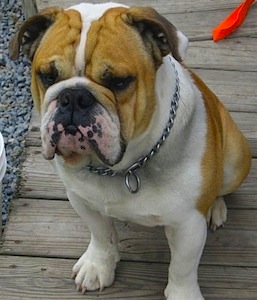
 bizarre
tragedy, court papers charge.
bizarre
tragedy, court papers charge.
A doctor at Riverside Animal Clinic, located at 801 W 187th
St., had told Marie Moore that X-rays showed her beloved bulldog,
Cowboy, had died from congestive heart failure, but an autopsy found
that his heart was fine and that he'd actually suffocated as a result
of over-barking, Moore said in papers filed in Manhattan
Supreme Court.
"Defendants ignored obvious signs of Cowboy's distress,
allowing Cowboy to continue barking for days without proper care or
intervention, until his severely swollen throat suffocated him and
caused his death," Moore said in her suit, which charges
the clinic and kennel with veterinary malpractice.
 "Moreover,
the X-rays Dr. [Javier] Ramos (left) claims to have relied upon to
substantiate his claim that Cowboy died from heart failure actually
show that Cowboy's heart was normal."
"Moreover,
the X-rays Dr. [Javier] Ramos (left) claims to have relied upon to
substantiate his claim that Cowboy died from heart failure actually
show that Cowboy's heart was normal."
Ramos and the clinic
declined comment.
The suit says Moore's nightmare began on March 9, when she took Cowboy,
an English bulldog "who was in good health," for boarding
at Riverside. She told staffers the pooch had never been in
a kennel for an extended period of time and "was assured
that Cowboy would be well treated."
Moore called to check on Cowboy on the 13th and "was
told that everything was fine," the suit says.
"One day later, Cowboy was dead."
The clinic didn't even have the decency to call Moore,
the suit charges, claiming staffers sent an e-mail to Moore's mom,
who was boarding her own dog there at the time, and asked her to give
them a call. The mom, Megan Strong, called
Riverside and was told Cowboy had died, the suit says. Moore
then called the clinic and was told by Ramos that Cowboy developed
breathing problems that morning and an X-ray of his chest "showed
an enlarged heart."
Based on the X-ray, Ramos "concluded Cowboy was having congestive
heart failure and he could do nothing to save Cowboy."
An
autopsy showed Cowboy's heart was fine, but his throat was swollen
and his stomach was full of air, a sign of respiratory distress, the
suit says.
A
"correct diagnosis of severe laryngeal edema and airway obstruction,
followed by proper emergency procedures, would have saved Cowboy's
life," the suit says.
Moore's father-in-law, Carlos Moore, called the death "very shocking,
just awful." As for Cowboy, "Everybody loved him,"
Moore said. "He was a wonderful dog."
Can a dog
bark itself to death?
Mostly
no, but English bulldogs like Cowboy can, said Dr. Ann Hohenhaus
of the Animal Medical Center. They have three issues that can lead
to suffocation if their throats get swollen:
• Respiratory problems from their squashed faces
• Small windpipes
• Laryngeal saccules that, unlike other dogs, stick out into
their airways


ASPCA
Launches Campaign Hoping To Discourage Puppy Mill Purchases
NEW YORK
July 22, 2011
The
American Society for the
Prevention
of Cruelty to Animals announced
a new campaign aimed to  stop
people from purchasing pets from so-called puppy mills.
stop
people from purchasing pets from so-called puppy mills.
The ASPCA,
in a news release, charges that operators of puppy mills run their
facilities  in
often unsanitary, overcrowded and cruel conditions, “where
profit is given priority over the well-being of the dogs.”
in
often unsanitary, overcrowded and cruel conditions, “where
profit is given priority over the well-being of the dogs.”
Cori Menkin of the ASPCA
spoke with 1010
WINS on Friday and said that the organization
is hoping to “impact the industry” by asking consumers
to not shop at any pet stores that sell puppies.
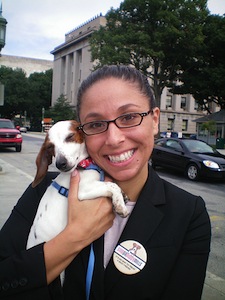 This
campaign isn’t just about where to get a puppy. It’s about
all of the pet-owning public and what they can do to help.
This
campaign isn’t just about where to get a puppy. It’s about
all of the pet-owning public and what they can do to help.
So
it’s about not buying any of your pet supplies at pet stores
that sell puppies,” Menkin (left) said.
The advocacy organization also commissioned a poll that found 80
percent of people would not purchase a puppy if they knew it came
from a puppy mill.
“Our
poll results indicated that nobody’s making the connection between
pet stores and puppy mills. And if that continues the demand for those
puppies is going to continue,” Menkin said.
“The
more we can hit at the demand and decrease the demand for their ‘product,’
the more impact we can have on the market. If people stop buying the
puppies, the puppy mills will stop churning them out,” said
Menkin.


Paw Pal program unites city middle-schoolers
with needy pets at upstate shelter
BY AMY SACKS
Saturday, July
16th 2011
Sending personal letters
and toys to shelter dogs was an awesome experience for some
socially conscious local 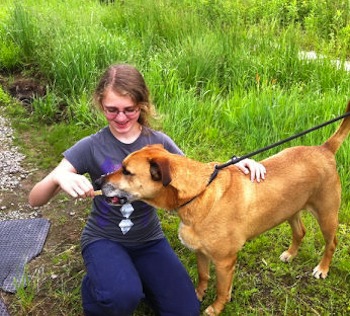 tweens,
but getting to meet their four-legged pen pals for real was magical.
tweens,
but getting to meet their four-legged pen pals for real was magical.
"These dogs had been through a lot," said
Lucy (left), a 12-year-old animal welfare advocate,
who was recently treated to hugs and licks at her first face-to-snout
meeting with her paw pal, named Spike, at Glen
Wild Animal Rescue, a sanctuary in upstate New
York.
"I felt blessed that I could physically meet him, give
him lots of treats, play with him and let him know that another person
besides the staff at Glen Wild cared about him and wanted him to be
happy," Lucy said.
The 9-year-old Golden mutt landed at the sanctuary
after being pulled from the NYC Animal Care
& Control shelter.
Spike's
owner had died, and the orphaned dog was slated to be euthanized.
Lucy
is among a group of New York City middle-schoolers who participate
in the Paw Pal program through the  nonprofit
group Unleashed.
The after-school leadership program for girls empowers them to become
social change agents, using animal rescue as their leadership laboratory,
said Stacey Radin, Unleashed's founder. "They
are encouraged to look at social problems in the world and think about
a solution," said Radin, a psychologist and leadership consultant.
nonprofit
group Unleashed.
The after-school leadership program for girls empowers them to become
social change agents, using animal rescue as their leadership laboratory,
said Stacey Radin, Unleashed's founder. "They
are encouraged to look at social problems in the world and think about
a solution," said Radin, a psychologist and leadership consultant.
Each girl, who attends either Manhattan's Nightingdale-Bamford
School or the NYC LAB School, selected a
dog from a photo and a one sentence bio. Then, they wrote empathetic
letters to their respective paw pals, and sent treats and toys that
were infused with their scent. The letters were read to the dogs by
the rescue group's staff.
Glen Wild founder Liz Keller said the Paw Pal program
clearly helps the dogs heal from their misfortune. "To have the
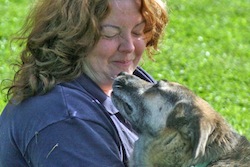 young
girls come up and bring toys and care packages really helps create
a more positive energy," she said.
young
girls come up and bring toys and care packages really helps create
a more positive energy," she said.
At any given time, about 40 dogs and 15 cats reside at the 20-acre
sanctuary, whose operation relies strictly on donations and a small
army of volunteers. Two goats also call the oasis home.
Most of the residents are pit-bull mixes and "bully breeds"
that Keller pulls from the euthanasia list at the AC&C shelters,
where she formerly worked as the Manhattan shelter manager. Keller
assesses the dogs and provides behavioral training so they can become
adoptable as pets.
Donations
can be sent to Glen Wild Rescue, P.O. Box 75, South Kortright, N.Y.
13842, or through the group's Web site, www.glenwildanimalrescue.org.
Unleashed
also relies on donation. For info, go to www.unleashed.org.
A
fund-raiser to benefit three local animal rescue groups will be held
Tuesday, July 19) at Copia in Manhattan from 6:30 p.m. to 9:30 p.m.
The event, organized by Weil Gotshal & Manges
LLP as part of the "Weil Pays it Forward"
effort, will raise funds for Bully Breed Rescue, Four Paws
Sake NYC and Rescuzilla.
Organizers also will collect toys, blankets and towels for NYC
Animal Care and Control. Tickets are $35 in advance
and $40 at the door, and cover two drinks and food. Copia
is located at 307 E. 53rd St. For more information, call (212) 310-8962
or check the "Paws for a Cause Happy Hour" on Facebook.


Some
Pet Owners Judge Jeter Name Best in Show
By JORGE CASTILLO
July 6, 2011
 In
his 17 seasons in the Bronx, Derek Jeter cemented his legacy as one
of the great Yankees. He is the team’s captain. He
has five World Series rings. He entered Tuesday’s game six hits
from becoming the first Yankee to join baseball’s 3,000-hit
club.
In
his 17 seasons in the Bronx, Derek Jeter cemented his legacy as one
of the great Yankees. He is the team’s captain. He
has five World Series rings. He entered Tuesday’s game six hits
from becoming the first Yankee to join baseball’s 3,000-hit
club.
Off the field, he has had a pretty good career, too, becoming the
fae of one of the most popular franchises in American sports, and
dating many beautiful women.
His success has allowed him to take his place among names like Ruth,
Mantle and DiMaggio. It has also, it turns out, earned him a prominent
place among another set of names — like Princess and Rocky,
Lucky and Buddy and Coco.
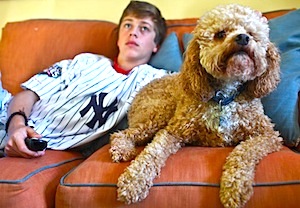 New
York City, you see, is home to 33 dogs actively registered under the
name Jeter. Across the Hudson, at the Valley Animal Hospital in Clifton,
N.J., there are seven clients who go by the name Jeter, and on a single
mail route in nearby Montclair, there are at least two Jeters —
both reported to be friendly. In Jersey City, a Labrador is named
Jeter; in Stamford, Conn., the city’s lone Jeter is a beagle.
New
York City, you see, is home to 33 dogs actively registered under the
name Jeter. Across the Hudson, at the Valley Animal Hospital in Clifton,
N.J., there are seven clients who go by the name Jeter, and on a single
mail route in nearby Montclair, there are at least two Jeters —
both reported to be friendly. In Jersey City, a Labrador is named
Jeter; in Stamford, Conn., the city’s lone Jeter is a beagle.
Jack Beibel (left), 16, of Montclair said he named his dog Jeter because
the shortstop was his favorite player. His cockapoo has taken to it.
“If we yell, ‘Yankees,’ he starts barking,’
” Beibel said. “And if we yell, ‘Red Sox,’
he kneels down.”
Jeter, by this canine measure, is more popular than his teammates,
according to statistics provided by the New York City Department
of Health. There is, for instance, one licensed dog
named A-Rod. There are eight licensed dogs named Tex in the city,
although it is far from clear whether they are all named in honor
of Mark Teixeira.
The phenomenon, though, has crossed into enemy territory, and has
been realized in Jeter’s hometown. There are, for instance,
three dogs registered as Jeter in Worcester, Mass., and another in
Cambridge, a mere bone’s throw from Fenway Park.
In
Kalamazoo, Mich., where Jeter grew up, there are four dogs named for
the hometown hero. Oh, and two cats, too.
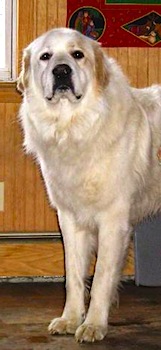 But
there has been, along with the harmless good fun, at least one truly
solemn story involving a dog named Jeter (right). In Dayton, Ohio,
a Great Pyrenees named after the shortstop died in a fire in June
2009 after alerting his owner about a fire in the basement of their
home.
But
there has been, along with the harmless good fun, at least one truly
solemn story involving a dog named Jeter (right). In Dayton, Ohio,
a Great Pyrenees named after the shortstop died in a fire in June
2009 after alerting his owner about a fire in the basement of their
home.
The owner, Glenda Moss, credited Jeter with saving her and
her son’s lives. “We named him Jeter because
we always loved Derek Jeter and we respect him,” said Moss,
who has no ties to the New York area and is not a Yankees fan. “We
believe that he has morals and that he really cares about the games.
That’s what we look for in baseball players. Do they respect
the game or is it just a business for them?”
Moss rescued Jeter through the National Great Pyrenees Rescue
and had him for three years before he died. The organization
donated another dog to the family four months after the fire. Moss
named her Maddux after the former major league pitcher Greg Maddux.
“He had the greatest social life,” Moss said of Jeter,
her dog. “Everybody loved him, and he loved everyone.”
 Jon
Levine and his family, also of Montclair, have a Cavalier King Charles
spaniel named Jeter with a couple connections to the almost
certain Hall of Famer.
Jon
Levine and his family, also of Montclair, have a Cavalier King Charles
spaniel named Jeter with a couple connections to the almost
certain Hall of Famer.
The Levines’ Jeter was born on June 25, 2009 —
one day before Derek Jeter’s birthday — and
was taken home to his new family on Sept. 11, 2009, the night Jeter
passed Lou Gehrig on the Yankees’ career hits list.
“The easy answer is I’m a die-hard Yankees fan,”
Levine said when asked about why he named his dog Jeter. “I
was a big fan of Thurman Munson, and in my adult life, Jeter has played
that role. He’s the epitome of class and character.”
The Jeter dog count is, by definition, fluid and perhaps imperfect
(one cannot, for instance, say with certainty they are all named after
the shortstop). The various agencies that keep track of such things
list only dogs that are currently registered; there could be a few
unlicensed, unregistered Jeters. There could be still other Jeters
who have died since the Jeter who was the 1996 American League Rookie
of the Year broke into the majors at age 21.
In New York, Jeter does not come close to cracking the city’s
10 most popular dog names. That list consists of traditional dog names
like Max, which 942 dogs answer to in the five boroughs. The only
top name that could possibly be associated with an athlete is Rocky,
which is the third-most popular name in the city, with 644 dogs licensed.
Photos
top left and bottom left:
Fred R. Conrad/The New York Times


Tracing
Unscooped Dog Waste Back to the Culprit
By KATIE ZEZIMA
July 2, 2011
Sherlock
Holmes had the case of the dog that didn’t bark, but
it has taken two dozen apartment complexes and a 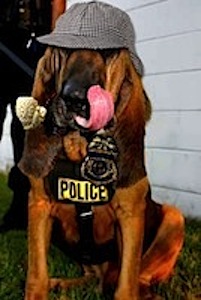
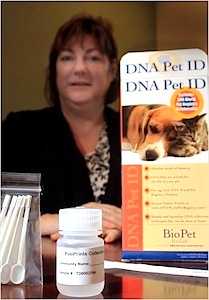 testing
company in Tennessee to bring the art of canine detection into the
“CSI” age. And the evidence is right
underfoot.
testing
company in Tennessee to bring the art of canine detection into the
“CSI” age. And the evidence is right
underfoot.
Canine
DNA is now being used to identify the culprits who fail to clean up
after their pets, an offense that Deborah Violette
(left), for one, is committed to eradicating at the apartment complex
she manages. Everyone who owns a dog in her complex, Timberwood
Commons in Lebanon, N.H., must submit a sample of its DNA,
taken by rubbing a cotton swab around inside the animal’s mouth.
The swab is sent to BioPet Vet Lab, a Knoxville,
Tenn., company that enters it into a worldwide database.
If Ms. Violette finds an unscooped pile, she can take a sample, mail
it to Knoxville and use a DNA match to identify the offending owner.
Called PooPrints, the system costs $29.99
for the swabbing kit, $10 for a vial to hold the samples and $50 to
analyze them, which usually takes a week or two. The company
says that about two dozen apartment complexes around the country have
signed up for the service. In 2008, the Israeli city of Petah Tikva
created a dog DNA database for the same purpose.
“It’s kind of like the F.B.I., but on a much smaller scale,”
said Eric Mayer, director of franchise development for BioPet Vet
Lab, which makes the kits.
Ms. Violette said that at her complex, which opened in December and
has a designated building for pet owners, unwanted surprises have
sometimes been found on lawns. “We had a little bit of a problem,”
Ms. Violette said. “Enough that I wanted to try to nip it in
the bud.”
Dog owners were notified about the testing last week, and
most are now taking their pets in to provide DNA samples. But not
everyone. “I’ve had some people say it’s
completely over the top and ridiculous,” Ms. Violette
said. “I’m sure I’ll have a few people who won’t
come in, and I’m sure those are the people we’ll have
to chase and those are the people who are doing it.”
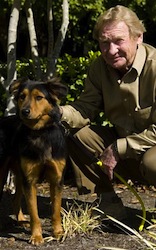 Tom
Boyd, the founder and chief executive of BioPet Vet Lab, said
the company made the kits in response to the large of numbers of the
dogs in the United States and to health concerns connected to dog
feces. According to the American Society for the Prevention
of Cruelty to Animals, there are about 75 million dogs in the United
States.
Tom
Boyd, the founder and chief executive of BioPet Vet Lab, said
the company made the kits in response to the large of numbers of the
dogs in the United States and to health concerns connected to dog
feces. According to the American Society for the Prevention
of Cruelty to Animals, there are about 75 million dogs in the United
States.
“If you took 75 million Americans and said they no longer
have a commode, can you imagine what would happen in a week?”
Mr. Boyd asked.
Not everyone is on board with the idea, though.
Karen Harvey of Forest Property Management in McCall, Idaho,
said her company was not prepared to collect canine samples along
with the rent checks. “If you allow pets, that sort
of comes with it,” Ms. Harvey said. “I guess I would never
take the issue of dog poop that far.”


 MAY CONTAIN GRAPHIC IMAGES
MAY CONTAIN GRAPHIC IMAGES 
![]() Wooves!
Wooves!

![]()
![]() Wooves!
Wooves!

![]()





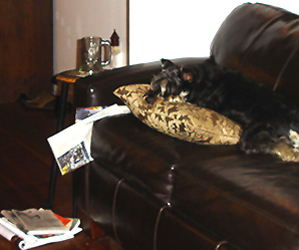






 Litter
Lit
Litter
Lit


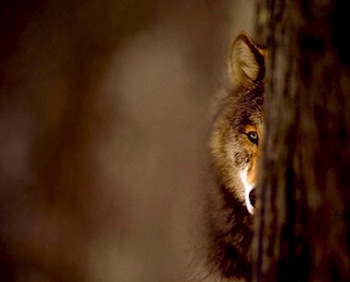 few
in number and eat species lower on the pyramid. Like most
simple metaphors, this one has a perceptual flaw. It creates the illusion
that large predators have an effect only on the prey species immediately
below them. The truth, as a growing body of scientific studies
shows, is that the presence, and absence, of top predators
cascades all through nature in surprisingly complex ways.
few
in number and eat species lower on the pyramid. Like most
simple metaphors, this one has a perceptual flaw. It creates the illusion
that large predators have an effect only on the prey species immediately
below them. The truth, as a growing body of scientific studies
shows, is that the presence, and absence, of top predators
cascades all through nature in surprisingly complex ways.
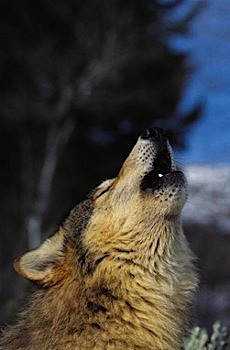
 how
to end federal protections for wolves in the state,
officials said Wednesday. Environmentalists criticized the
deal, saying that Wyoming’s plan — unique among Western
states — to classify wolves as predators
that could be shot on sight
in most areas fails to give the animals enough protection.
Gov. Matt Mead (at right in photo with Mr.
Salazar >) hailed the deal, saying wolves have taken a
heavy toll on livestock and wildlife since they were reintroduced
in the 1990s. Wyoming is the last state in the Northern Rockies that
still has federal oversight of its wolf population. Interior
Secretary Ken Salazar said the deal “recognizes
the success of this iconic species and will ensure the long-term conservation
of gray wolves.” Under the agreement, Wyoming
would commit to maintaining at least 10 breeding pairs and 100 wolves
outside Yellowstone National Park. There are now
about 340 wolves in the state.
how
to end federal protections for wolves in the state,
officials said Wednesday. Environmentalists criticized the
deal, saying that Wyoming’s plan — unique among Western
states — to classify wolves as predators
that could be shot on sight
in most areas fails to give the animals enough protection.
Gov. Matt Mead (at right in photo with Mr.
Salazar >) hailed the deal, saying wolves have taken a
heavy toll on livestock and wildlife since they were reintroduced
in the 1990s. Wyoming is the last state in the Northern Rockies that
still has federal oversight of its wolf population. Interior
Secretary Ken Salazar said the deal “recognizes
the success of this iconic species and will ensure the long-term conservation
of gray wolves.” Under the agreement, Wyoming
would commit to maintaining at least 10 breeding pairs and 100 wolves
outside Yellowstone National Park. There are now
about 340 wolves in the state. 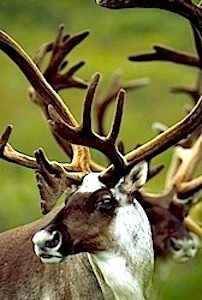 scientists
reported last week in Frontiers in Ecology.
scientists
reported last week in Frontiers in Ecology.
 go
on without harming the caribou, and that killing wolves is neither
necessary nor desirable. Dr. Wasser said that the
primary problem is the presence of high-use roads in flat open areas.
go
on without harming the caribou, and that killing wolves is neither
necessary nor desirable. Dr. Wasser said that the
primary problem is the presence of high-use roads in flat open areas.
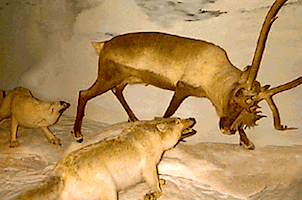
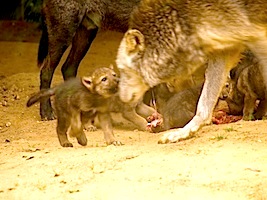

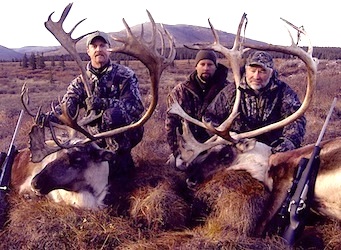

 U.S. K-9 MEMORIAL MONUMENTS
U.S. K-9 MEMORIAL MONUMENTS 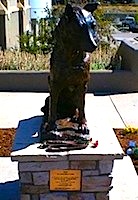
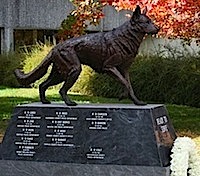
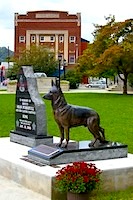
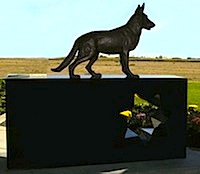
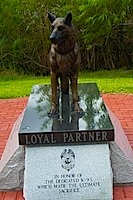


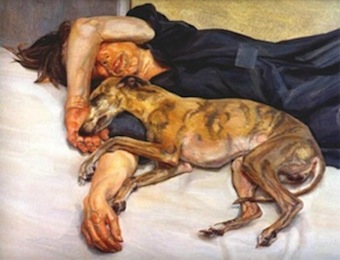
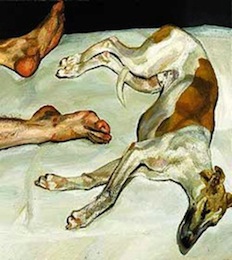
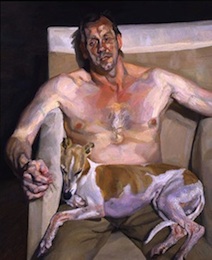



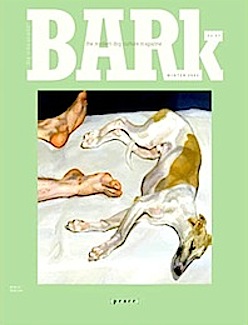

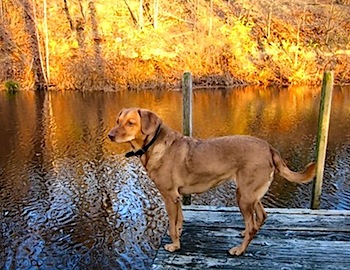 was
a medium-size brown dog. Beyond that, all is speculation. They just
wanted to get rid of her, and for good reason. Mimi didn't possess the
dog world's most winning personality.
was
a medium-size brown dog. Beyond that, all is speculation. They just
wanted to get rid of her, and for good reason. Mimi didn't possess the
dog world's most winning personality.
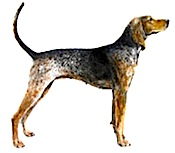 The
American English Coonhound is an avid hunter known for
its tremendous speed and loud voice. Originally these hounds were used
to hunt fox by day and raccoon by night in the American colonies. Today,
they still need regular daily exercise to stay in shape. American English
Coonhounds are sociable animals that get along well with people and
The
American English Coonhound is an avid hunter known for
its tremendous speed and loud voice. Originally these hounds were used
to hunt fox by day and raccoon by night in the American colonies. Today,
they still need regular daily exercise to stay in shape. American English
Coonhounds are sociable animals that get along well with people and
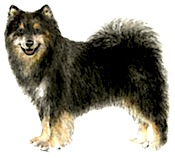 other
dogs. They are very trainable and eager to please.
other
dogs. They are very trainable and eager to please.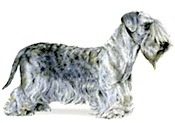
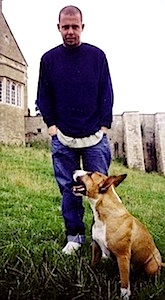
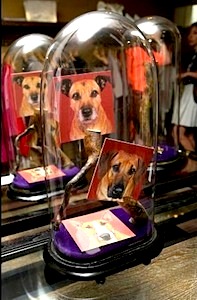 much
as he left his dogs.
much
as he left his dogs.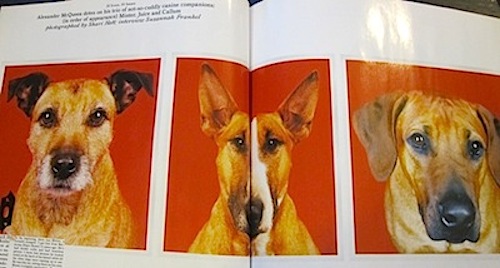



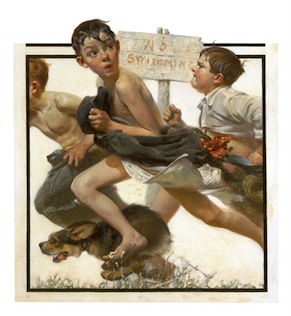


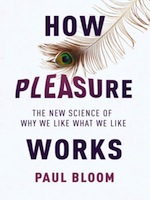
 photograph
of two adult giraffes nuzzling a calf, the baby’s eyes half closed
in bliss. Or a Japanese macaque cradling her infant. Call it love or
call it bonding, but, Dr. Balcombe writes, “the hormones
are exactly the same in a human and a vole (right)” — one
of the most studied animals in the realm of emotional attachment —
“and the evolutionary benefits align.”
photograph
of two adult giraffes nuzzling a calf, the baby’s eyes half closed
in bliss. Or a Japanese macaque cradling her infant. Call it love or
call it bonding, but, Dr. Balcombe writes, “the hormones
are exactly the same in a human and a vole (right)” — one
of the most studied animals in the realm of emotional attachment —
“and the evolutionary benefits align.”
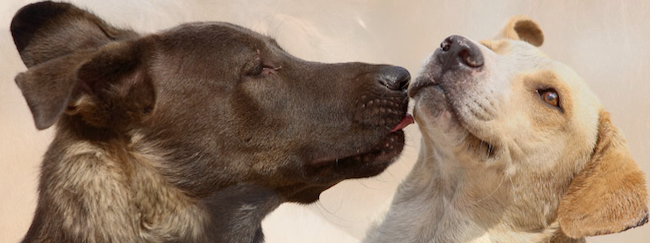
 MAUREEN
DOWD
MAUREEN
DOWD
 dictator.
Absolute power deranges them and gives them delusions and fantasies.
So we shouldn’t be surprised by news reports suggesting the Führer
was batty beyond even Mel Brooks’s satire.
dictator.
Absolute power deranges them and gives them delusions and fantasies.
So we shouldn’t be surprised by news reports suggesting the Führer
was batty beyond even Mel Brooks’s satire.
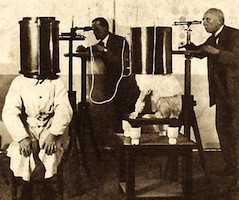 A
new book, “Amazing Dogs,”
by Dr. Jan Bondeson, a senior lecturer at Cardiff University School
of Medicine in Wales, reveals that Hitler supported a German school
that tried to teach large, muscular mastiffs to “talk” to
humans. This story set off a panting spate of “Heel
Hitler,” “Furred Reich,” “Wooffan SS”
and “Arf Wiedersehen” headlines in British
tabloids and plenty of claims that Hitler was “barking
mad.”
A
new book, “Amazing Dogs,”
by Dr. Jan Bondeson, a senior lecturer at Cardiff University School
of Medicine in Wales, reveals that Hitler supported a German school
that tried to teach large, muscular mastiffs to “talk” to
humans. This story set off a panting spate of “Heel
Hitler,” “Furred Reich,” “Wooffan SS”
and “Arf Wiedersehen” headlines in British
tabloids and plenty of claims that Hitler was “barking
mad.”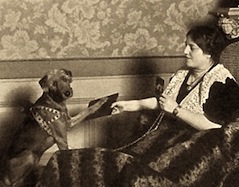 going
on in wartime Germany, with regard to dog-human communication,”
Bondeson writes, wondering: “Were the Nazis trying to
develop a breed of super-intelligent canine storm troopers, capable
of communicating with their human masters of the Herrenvolk?”
going
on in wartime Germany, with regard to dog-human communication,”
Bondeson writes, wondering: “Were the Nazis trying to
develop a breed of super-intelligent canine storm troopers, capable
of communicating with their human masters of the Herrenvolk?”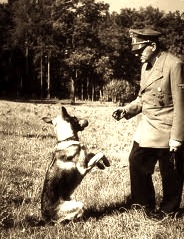 such
conspicuous disregard for human rights, felt more strongly about the
animals.”
such
conspicuous disregard for human rights, felt more strongly about the
animals.”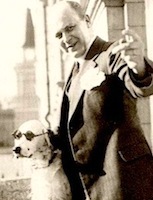
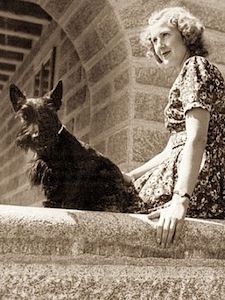

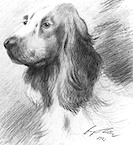

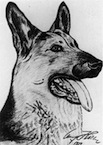
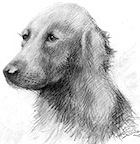
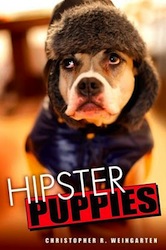


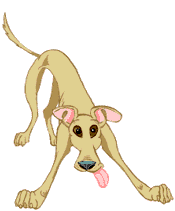
 old
girl who was testifying that her father had raped and impregnated
her. Rosie sat by the teenager’s feet. At particularly
bad moments, she leaned in.
old
girl who was testifying that her father had raped and impregnated
her. Rosie sat by the teenager’s feet. At particularly
bad moments, she leaned in.  the
teenager “was most grateful to Rosie above all,” said
David A. Crenshaw (at right with Rosie and handler Sherri Cookinham),
a psychologist who works with the teenager. “She just kept hugging
Rosie,” he continued. Now an appeal planned by the
defense lawyers is placing Rosie at the heart of a legal debate that
will test whether there will be more Rosies in courtrooms in New York
and, possibly, other states.
the
teenager “was most grateful to Rosie above all,” said
David A. Crenshaw (at right with Rosie and handler Sherri Cookinham),
a psychologist who works with the teenager. “She just kept hugging
Rosie,” he continued. Now an appeal planned by the
defense lawyers is placing Rosie at the heart of a legal debate that
will test whether there will be more Rosies in courtrooms in New York
and, possibly, other states. dog
named Jeeter with a beige button nose to help in a sexual assault
case in Seattle. “Sometimes the dog means the difference between
a conviction and an acquittal,” said Ellen O’Neill-Stephens
(Left with Jeeter), a prosecutor there who has become a campaigner
for the dog-in-court cause [founder of Court Dogs].
dog
named Jeeter with a beige button nose to help in a sexual assault
case in Seattle. “Sometimes the dog means the difference between
a conviction and an acquittal,” said Ellen O’Neill-Stephens
(Left with Jeeter), a prosecutor there who has become a campaigner
for the dog-in-court cause [founder of Court Dogs]. allowed
Rosie to accompany the teenage rape victim to the trial here, a Dutchess
County Court judge, Stephen L. Greller, said the teenager was traumatized
and the defendant, Victor Tohom (right), appeared threatening.
Although he said there was no precedent in the state, Judge
Greller ruled that Rosie was similar to the teddy bear that a New
York appeals court said in 1994 could accompany a child witness. At
least once when the teenager hesitated in Judge Greller’s courtroom,
the dog rose and seemed to push the girl gently with her nose. Mr.
Tohom was convicted and sentenced to 25 years to life.
allowed
Rosie to accompany the teenage rape victim to the trial here, a Dutchess
County Court judge, Stephen L. Greller, said the teenager was traumatized
and the defendant, Victor Tohom (right), appeared threatening.
Although he said there was no precedent in the state, Judge
Greller ruled that Rosie was similar to the teddy bear that a New
York appeals court said in 1994 could accompany a child witness. At
least once when the teenager hesitated in Judge Greller’s courtroom,
the dog rose and seemed to push the girl gently with her nose. Mr.
Tohom was convicted and sentenced to 25 years to life. ages
5 and 11, who were getting ready to testify against the man
accused of murder in the stabbing of their mother. The Dutchess
prosecutor in that case, Matthew A. Weishaupt, argued that Rosie and
dogs like her did not affect the substance of the testimony about
horrifying crimes. “These dogs ease the stress and ease the
trauma so a child can take the stand,” Mr. Weishaupt said in
an interview.
ages
5 and 11, who were getting ready to testify against the man
accused of murder in the stabbing of their mother. The Dutchess
prosecutor in that case, Matthew A. Weishaupt, argued that Rosie and
dogs like her did not affect the substance of the testimony about
horrifying crimes. “These dogs ease the stress and ease the
trauma so a child can take the stand,” Mr. Weishaupt said in
an interview. When New York appeals courts study the question, they are likely to
look at the experience of courtroom dogs around the country, including
in Washington. In Seattle, a developmentally disabled
57-year-old man, Douglas K. Lare, recently recalled
how a Labrador retriever named Ellie, who has made more than
50 court appearances, helped him testify against a man charged with
a scheme to steal from him.
When New York appeals courts study the question, they are likely to
look at the experience of courtroom dogs around the country, including
in Washington. In Seattle, a developmentally disabled
57-year-old man, Douglas K. Lare, recently recalled
how a Labrador retriever named Ellie, who has made more than
50 court appearances, helped him testify against a man charged with
a scheme to steal from him. 
 with
emotionally troubled children at a residential center in Brewster.
The Picards’ organization, Educated Canines Assisting
With Disabilities, or ECAD, places service dogs after training
them to perform tasks like turning lights on and off and opening doors.
with
emotionally troubled children at a residential center in Brewster.
The Picards’ organization, Educated Canines Assisting
With Disabilities, or ECAD, places service dogs after training
them to perform tasks like turning lights on and off and opening doors.

 million
for 1,400 lovely square feet in the ClockTower, at 1 Main Street in
Dumbo, Brooklyn. The plan was for his girlfriend to join him there.
million
for 1,400 lovely square feet in the ClockTower, at 1 Main Street in
Dumbo, Brooklyn. The plan was for his girlfriend to join him there.


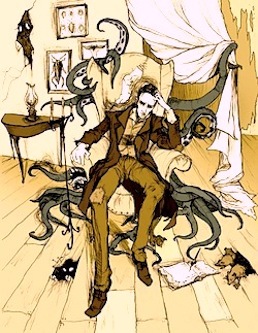
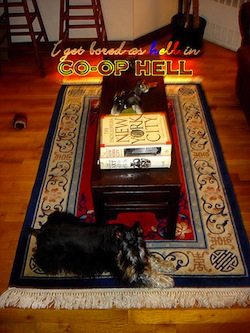
 was
a compound of all that is unclean, uncanny, unwelcome,
abnormal and detestable. It was the ghoulish shade
of decay, antiquity and desolation; the putrid, dripping
eidolon of unwholesome revelation; the awful baring
of that which the merciful earth should always hide.”
was
a compound of all that is unclean, uncanny, unwelcome,
abnormal and detestable. It was the ghoulish shade
of decay, antiquity and desolation; the putrid, dripping
eidolon of unwholesome revelation; the awful baring
of that which the merciful earth should always hide.”

 Man's
new best friend doesn't bark -- but it bytes.
Man's
new best friend doesn't bark -- but it bytes.
 A new canine-only shop in Melbourne, Australia, sells
treats such as "pupperoni" pizza and doggie
doughnuts. The shop creates about 10 customized birthday
cakes a week.
A new canine-only shop in Melbourne, Australia, sells
treats such as "pupperoni" pizza and doggie
doughnuts. The shop creates about 10 customized birthday
cakes a week.


 ROCK
Positano is NYC's four-star highly recommended A-1
foot doctor. Patients from Joe DiMaggio to to day's Yankees
to Henry Kissinger, whose Black Lab
developed a bad foot. Dr. Rock explained: "I treat humans,
not hounds. Take her to the vet." Hardly one to take
orders, our former Sec'y of State marched Amelia right
into Positano's waiting room then into his surgery. While
an office full of two-legged cases waited, Dr. Rock took care of Dr.
Kissinger's adored Lab.
ROCK
Positano is NYC's four-star highly recommended A-1
foot doctor. Patients from Joe DiMaggio to to day's Yankees
to Henry Kissinger, whose Black Lab
developed a bad foot. Dr. Rock explained: "I treat humans,
not hounds. Take her to the vet." Hardly one to take
orders, our former Sec'y of State marched Amelia right
into Positano's waiting room then into his surgery. While
an office full of two-legged cases waited, Dr. Rock took care of Dr.
Kissinger's adored Lab. devoured
that first meal, his tongue lapping even the underside of the bowl,
desperately searching for more. And then Mookie, who is 9, started
barking — at the refrigerator.
devoured
that first meal, his tongue lapping even the underside of the bowl,
desperately searching for more. And then Mookie, who is 9, started
barking — at the refrigerator.
 safe
for humans, he used to throw them away, largely out of cosmetic concerns
or because of a surplus. Nowadays, he grinds them up, roasts them
and combines them with seasonal produce.
safe
for humans, he used to throw them away, largely out of cosmetic concerns
or because of a surplus. Nowadays, he grinds them up, roasts them
and combines them with seasonal produce. but
I’m going to live on Power Bars.’ ”
but
I’m going to live on Power Bars.’ ” and
tongue, and sprinkled with beef fat. Fleisher’s sells about
100 pounds of patties a week.
and
tongue, and sprinkled with beef fat. Fleisher’s sells about
100 pounds of patties a week. grade
puppy chow. On a recent weekday afternoon, Linda Mascia and
Janet Gritzka, both 64 and from Huntington in Suffolk County,
admired the meats in the display case at Dickson’s Farmstand
in the Chelsea Market. The women inquired about the
beef labeled picanha (a premium Brazilian-style cut) and laughed when
asked if they would consider Farm to Bowl dog food
for their dogs.
grade
puppy chow. On a recent weekday afternoon, Linda Mascia and
Janet Gritzka, both 64 and from Huntington in Suffolk County,
admired the meats in the display case at Dickson’s Farmstand
in the Chelsea Market. The women inquired about the
beef labeled picanha (a premium Brazilian-style cut) and laughed when
asked if they would consider Farm to Bowl dog food
for their dogs.
 bizarre
tragedy, court papers charge.
bizarre
tragedy, court papers charge. "Moreover,
the X-rays Dr. [Javier] Ramos (left) claims to have relied upon to
substantiate his claim that Cowboy died from heart failure actually
show that Cowboy's heart was normal."
"Moreover,
the X-rays Dr. [Javier] Ramos (left) claims to have relied upon to
substantiate his claim that Cowboy died from heart failure actually
show that Cowboy's heart was normal."
 stop
people from purchasing pets from so-called puppy mills.
stop
people from purchasing pets from so-called puppy mills. in
often unsanitary, overcrowded and cruel conditions, “where
profit is given priority over the well-being of the dogs.”
in
often unsanitary, overcrowded and cruel conditions, “where
profit is given priority over the well-being of the dogs.” This
campaign isn’t just about where to get a puppy. It’s about
all of the pet-owning public and what they can do to help.
This
campaign isn’t just about where to get a puppy. It’s about
all of the pet-owning public and what they can do to help. tweens,
but getting to meet their four-legged pen pals for real was magical.
tweens,
but getting to meet their four-legged pen pals for real was magical. nonprofit
group
nonprofit
group  young
girls come up and bring toys and care packages really helps create
a more positive energy," she said.
young
girls come up and bring toys and care packages really helps create
a more positive energy," she said. In
his 17 seasons in the Bronx, Derek Jeter cemented his legacy as one
of the great Yankees. He is the team’s captain. He
has five World Series rings. He entered Tuesday’s game six hits
from becoming the first Yankee to join baseball’s 3,000-hit
club.
In
his 17 seasons in the Bronx, Derek Jeter cemented his legacy as one
of the great Yankees. He is the team’s captain. He
has five World Series rings. He entered Tuesday’s game six hits
from becoming the first Yankee to join baseball’s 3,000-hit
club. New
York City, you see, is home to 33 dogs actively registered under the
name Jeter. Across the Hudson, at the Valley Animal Hospital in Clifton,
N.J., there are seven clients who go by the name Jeter, and on a single
mail route in nearby Montclair, there are at least two Jeters —
both reported to be friendly. In Jersey City, a Labrador is named
Jeter; in Stamford, Conn., the city’s lone Jeter is a beagle.
New
York City, you see, is home to 33 dogs actively registered under the
name Jeter. Across the Hudson, at the Valley Animal Hospital in Clifton,
N.J., there are seven clients who go by the name Jeter, and on a single
mail route in nearby Montclair, there are at least two Jeters —
both reported to be friendly. In Jersey City, a Labrador is named
Jeter; in Stamford, Conn., the city’s lone Jeter is a beagle. But
there has been, along with the harmless good fun, at least one truly
solemn story involving a dog named Jeter (right). In Dayton, Ohio,
a Great Pyrenees named after the shortstop died in a fire in June
2009 after alerting his owner about a fire in the basement of their
home.
But
there has been, along with the harmless good fun, at least one truly
solemn story involving a dog named Jeter (right). In Dayton, Ohio,
a Great Pyrenees named after the shortstop died in a fire in June
2009 after alerting his owner about a fire in the basement of their
home. Jon
Levine and his family, also of Montclair, have a Cavalier King Charles
spaniel named Jeter with a couple connections to the almost
certain Hall of Famer.
Jon
Levine and his family, also of Montclair, have a Cavalier King Charles
spaniel named Jeter with a couple connections to the almost
certain Hall of Famer.
 testing
company in Tennessee to bring the art of canine detection into the
“CSI” age. And the evidence is right
underfoot.
testing
company in Tennessee to bring the art of canine detection into the
“CSI” age. And the evidence is right
underfoot. Tom
Boyd, the founder and chief executive of BioPet Vet Lab, said
the company made the kits in response to the large of numbers of the
dogs in the United States and to health concerns connected to dog
feces. According to the American Society for the Prevention
of Cruelty to Animals, there are about 75 million dogs in the United
States.
Tom
Boyd, the founder and chief executive of BioPet Vet Lab, said
the company made the kits in response to the large of numbers of the
dogs in the United States and to health concerns connected to dog
feces. According to the American Society for the Prevention
of Cruelty to Animals, there are about 75 million dogs in the United
States.
 hound
competition at the Sonoma-Marin Fair in Petaluma, Calif.
hound
competition at the Sonoma-Marin Fair in Petaluma, Calif. board
with her dog, authorities said.
board
with her dog, authorities said.
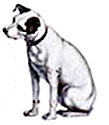

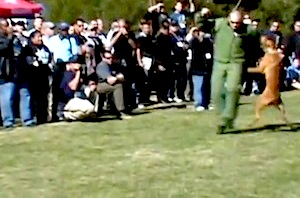 With
three training classes running simultaneously and continuing for three
days, HITS 2011 is fills the voids of training and learning like no other
event in the world. From our ingeniously designed HITS 2011 program
guide, you get to choose and organize your own personalized training seminar
that fits your training needs. Many of the instructors are so popular
that they’re classes will be repeated throughout the seminar, so
don’t worry about having to pick one class over another if your
favorite classes are running simultaneously.
With
three training classes running simultaneously and continuing for three
days, HITS 2011 is fills the voids of training and learning like no other
event in the world. From our ingeniously designed HITS 2011 program
guide, you get to choose and organize your own personalized training seminar
that fits your training needs. Many of the instructors are so popular
that they’re classes will be repeated throughout the seminar, so
don’t worry about having to pick one class over another if your
favorite classes are running simultaneously.

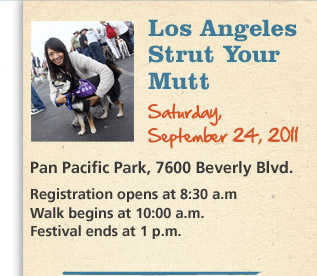


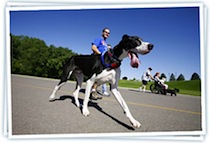



 A
former journalist, Katya has honed the art of capturing the essence of
a campaign, program or rescue in a narrative that grabs attention and
drives public action and support.
A
former journalist, Katya has honed the art of capturing the essence of
a campaign, program or rescue in a narrative that grabs attention and
drives public action and support. 
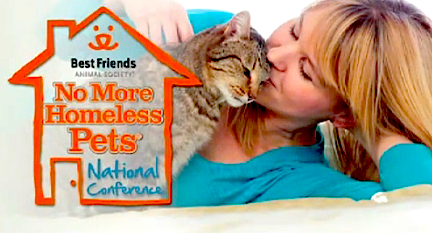




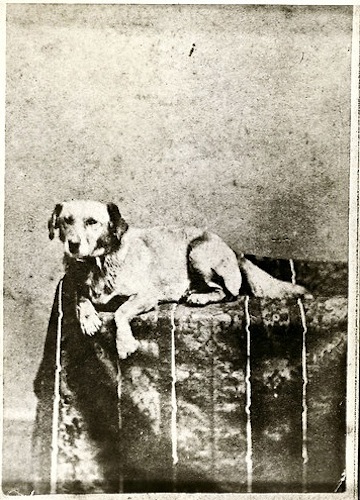
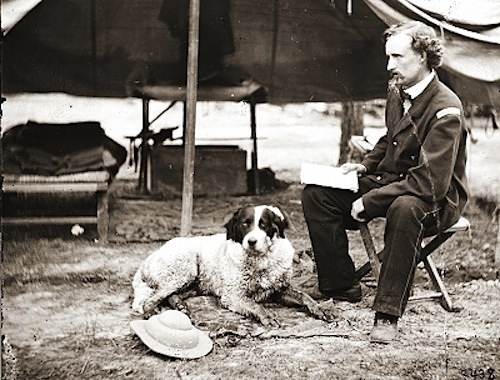
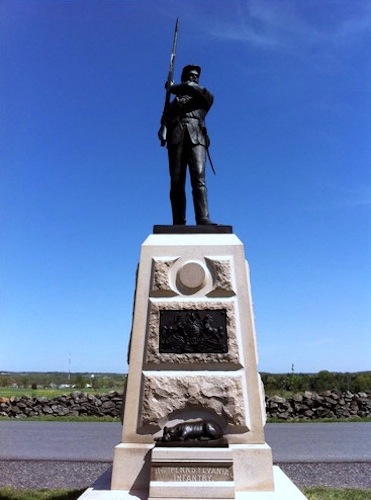
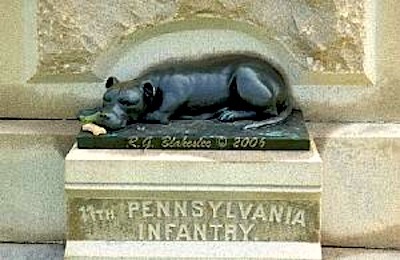

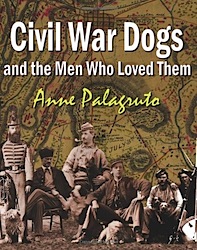




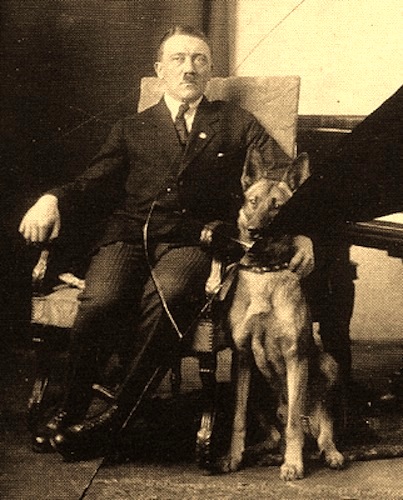
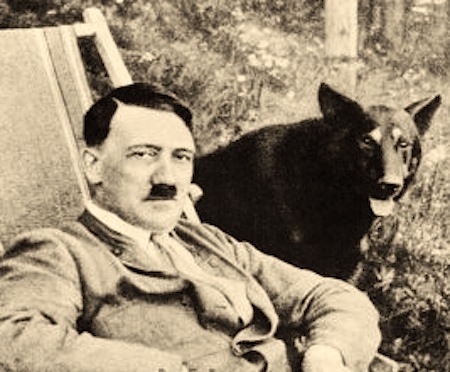
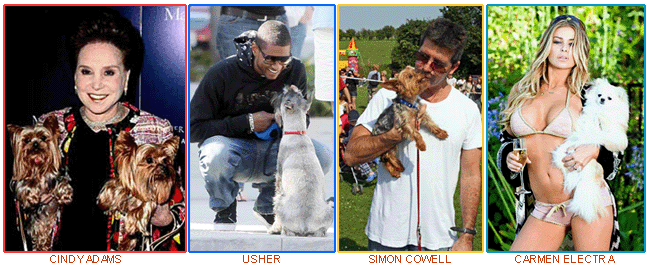
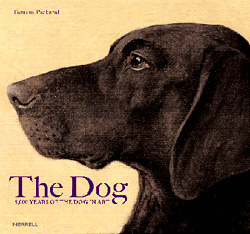


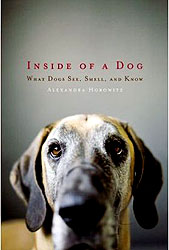
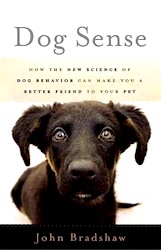
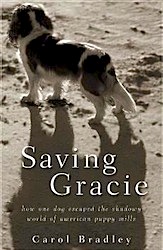
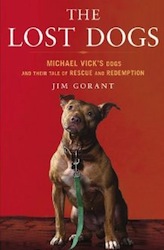


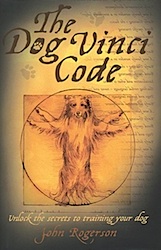
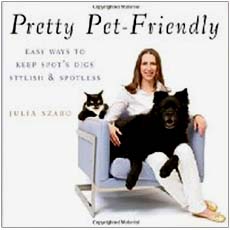
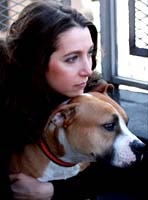
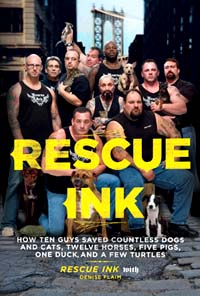


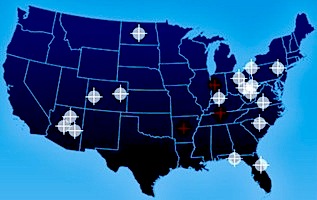
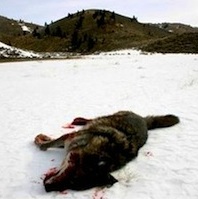





 “The
Wolf hunt has brought out feelings that have less to do
with Canis Lupus than with something more deep-seated.
Gray Wolves were exterminated long ago in most Western
states, a campaign of blood lust, terror and bounty kills.”
“The
Wolf hunt has brought out feelings that have less to do
with Canis Lupus than with something more deep-seated.
Gray Wolves were exterminated long ago in most Western
states, a campaign of blood lust, terror and bounty kills.”

 "Humans
- who enslave, castrate, experiment on, and fillet other
animals - have an understandable penchant for pretending
animals do not feel pain. A sharp distinction between humans
and "animals" is essential as we are to bend them
to our will, wear them, eat them - without any disquieting
tinges of guilt or regret."
"Humans
- who enslave, castrate, experiment on, and fillet other
animals - have an understandable penchant for pretending
animals do not feel pain. A sharp distinction between humans
and "animals" is essential as we are to bend them
to our will, wear them, eat them - without any disquieting
tinges of guilt or regret."